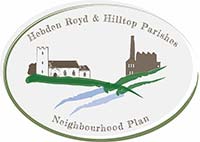 Neighbourhood Plan: Transport and accessibility
Neighbourhood Plan: Transport and accessibility
Friday, 12 March 2021
Like climate change, the subject of a previous article, the issue of transport involves a mixture of threats and opportunities which require serious attention within the neighbourhood plan. Connecting the two, transport is already the largest generator of carbon emissions within Calderdale (and nationally), and equally the most important contributor to air pollution. Hence Hebden Bridge was declared an air quality management area in 2006, but still has unlawful air quality. The Neighbourhood Plan area has the benefit of multiple transport corridors - road, rail, and canal (where the towpath is now repurposed as a pedestrian route) – but these are constrained within the narrow limits of the Upper Calder Valley. This prevents the physical expansion of the A646's capacity, and also means that when that single main route is interrupted by major blockage, such as the implementation of Mytholmroyd's flood scheme or even some roadworks, then the valley bottom communities and the upland settlements connected to these transport arteries, can experience economic and social disruption and damage.
Flat sites for more physical parking provision are also scarce, with other uses more beneficial to residents, like housing, competing for their allocation. The popularity of Hebden B ridge as a visitor market destination means that these pressures are most acute there. Improvements to the rail service can be achieved, but they're costly and longer term. Finally the hilly topography is not the most welcoming for cycling.
Consequently, the Neighbourhood Plan plan has had to take very balanced and measured approach to this issue, recognising also that its powers of intervention are limited and solutions are in the hands of others: Calderdale Council, West Yorkshire Combined Authority, and train & bus operators. Necessarily that has to begin with a realistic review of the problems, before moving on sustainable solutions that respond to local circumstances. That starts paragraphs 11.2-3, page 48 onwards with an assessment of the possibility of future increased levels of road traffic and the knock-on effects for air pollution and 'severance' - where people using Hebden Bridge and Mytholmroyd town centres have to find a way safely across the busy main road. 'In this situation the plan has little choice but to adopt policy positions which restrain or discourage road traffic generation. Fortunately all the strategy frameworks -at WestYorkshire, Calderdale and neighbourhood plan level - all support an increasing shift towards more sustainable modes of transport, and the consequently need for policies which constrain road traffic' -11.5.
Public and active transport - train, bus, cycling, and walking - all need encouraging and the Neighbourhood Plan urges the public authorities to do this. Smaller scale interventions like the provision of cycle lockers can be supported, whilst in Hebden Bridge the extension of pedestrianisation is envisaged with similar improvements to the public realm in Mytholmroyd.
The expansion of Hebden Bridge station car park by 45 spaces provides the opportunity for a multimodal transport hub, which could be used to provide additional longer stay parking capacity at times of peak demand e.g at weekends when commuter use is reduced. (The parking expansion at Mytholmroyd station is even larger - some 200 spaces - but it's not clear how the benefits of that provision can be maximised without placing still more pressure on road capacity in the village centre). Having undertaken a review of the possible approaches to parking provision in 2017, the Neighbourhood Plan has come down in favour of more effective management and utilisation of existing on and off-street parking provision, combining with smaller scale additions to the physical parking stock, rather than new larger scale surface car parks. Policy 22 supports this approach and specifically rules out the provision of a multi-storey car park at surface level in Hebden Bridge.
In terms of accessibility - of public spaces, but also buildings - the Neighbourhood Plan made use of a survey by the Hebden Bridge Disability Access Forum which reviewed those areas of the town centre public realm which are alternatively passable, passable with caution, or not passable for people with disabilities. There's a map on page 53 showing the results, but the Neighbourhood Plan notes that similar assessments are at the moment not available for Mytholmroyd or the upland settlements. Consequently policy 23 gives support for programmes making the public realm in all these areas as fully passable as possible to be prepared, funded and implemented.
Transport and parking are always lively areas for debate, reflecting their importance for local communities, so what do you think about the proposed approach of the Neighbourhood Plan on these issues? Have you got suggestions you'd like to make? Why not contribute to the Hebweb discussion thread especially created for this topic?
This series of articles concludes next week with a consideration of all the other sections of the Neighbourhood Plan, and how its proposals for regeneration and improvement might proceed from planning blueprint to actual implementation.
See also
HebWeb News: Neighbourhood Plan: Climate Change, Flooding & Landscape 5 March 2021
HebWeb News: Neighbourhood Plan: Regeneration and new housing 26 Feb 2021
HebWeb News: 10 things to know about the Neighbourhood Plan 18 Feb 2021
HebWeb News: Launch of public consultation for new Neighbourhood Plan 17 Feb 2021
The Headlines or main points of the Neighbourhood Plan

